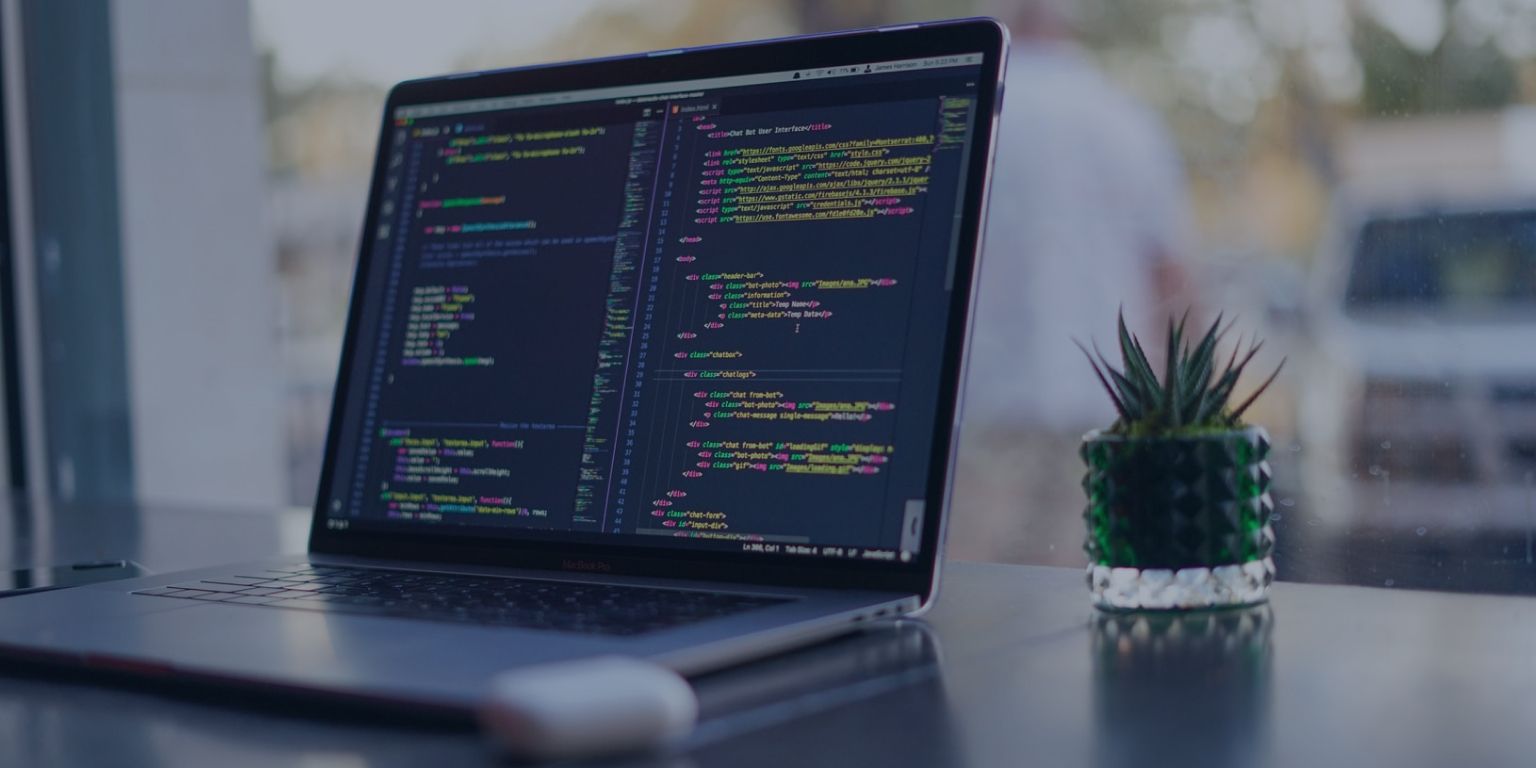The Ultimate Code Quality Checklist
10 August 2021 8 min read

Audio Version Of This Article
It is a common practice nowadays to check website code quality before executing any website code on a live website. There are various reasons for this practice, including reducing risk, better user experience, and also ensuring a higher search engine ranking.
This article focuses on some common questions that website owners commonly ask when they first start their search for a good coding software solution. The questions usually focus on such issues as what do I need to check for, how to check the code quality of my website and product?
Developers have various standards to check code quality and review. Code review is a complicated process, and every company must follow a code review checklist before conducting one.
Code Review to Check Website Code Quality
It is becoming more and more usual for development teams to conduct the code reviews. Code review templates provide the best way to review code quality. Before merging branches or releasing code to production, developers submit their code for review and feedback to check code quality. Developers make comments on individual lines of code and, in the end, accept or reject suggested changes.
Let's see what is a code review?
"It is a joint effort between the reviewer and the author. Aiming for perfection in all aspects, they want to create simple code to comprehend for the next developer. Not one developer is criticizing the other, but rather two developers are working together to create software of far higher quality than each could produce alone."
By David Bolton
Things to Do Before the Code Review Process:
These templates assist minimize the number of mistakes that go into production without question. There are a few things to bear in mind when performing a code audit. These processes should be followed by every team or CTO once the first code version is complete.
Before beginning the code evaluation process, it would be beneficial to create a design standard. A better way is to create a code review template...
Software performance goals, methods employed, technologies utilized, and the end output should be identified.
A Peer code review checklist is a useful tool for checking whether or not you've implemented code according to expectations, and if you haven't, how much it deviates from them.
What is a Checklist?
Checklists are used to keep track of important tasks. When developers review source code changes before they are incorporated into the codebase, they utilize checklists, including specified requirements.
What is the Purpose of a Checklist?
Checklists help keep things organized. Effortlessly ensure you complete all stages with this simple-to-use tool.
"Checklists are a kind of work assistance intended to decrease failure rates by accounting for human memory and attention limitations that may exist. It helps guarantee that a job is carried out consistently and completely. The "to-do" list is a good example."
A code review checklist may be used in a variety of circumstances.
Your business may already use checklists as part of its code review process, or you may create one as part of your own efforts to enhance your code reviews. The Code reviewer and code submitter alike may benefit from using a checklist.
In order to do this, it is necessary to prepare the code for review, and using a checklist enables the programmer to take a step back and examine their code more objectively before submitting it. A review checklist may be more beneficial for the programmer than the reviewer, in my opinion.
Checklist for Code Review
Mostly gut feeling is the primary basis for most code critiques. A lack of a clear approach guides their code review. Sometimes, due to this informal approach, some aspects of code review are overlooked or overlooked altogether
The checklist approach is more scientific to use.

This code review checklist is intended for both novice and experienced coders and includes both a required and a definitive list. Most programming languages may benefit from this list since it is language-neutral. However,
Here are the components of a checklist for code reviews:
1.Maintainability
A code review's most common objective is to improve the code's quality and make it easier to manage. Code of high quality has little technical debt and requires the least help while creating and managing future code versions.
Four criteria should be maintained for improved code quality.
- The code is easily readable
- The code is easy to test
- The code can be debugged
- The code can be reconfigured conveniently
Any developer should be able to read and understand the code easily. In any case, the code should be simple to test. Use interfaces to communicate between levels in this case.
2.Manageability
Several methods exist for ensuring manageability:
- Look for code that is simple to understand and read, as well as easy to maintain.
- Code should be simple to understand and should be formatted properly.
- Comment on key steps and instructions to enhance comprehension while excluding comments that impede comprehension.
- As a rule, use the proper language and align your code with the appropriate space in your code while writing code.
3.Correctness
An output test measures a code's ability to generate output. All test plans and unit cases should be available and executed. Every non-obvious thinking must be addressed in tests. The situation should not be rushed.
Checking for comments is one of the things that should be done during a code quality check. Coding comments should be carefully examined to ensure that they are accurate. Instead, it should be removed or remarked on.
4.Validation errors
The user's ability to enter data is tested. It must also accept any string that is typed into an input box. Your code's input parameters should be checked.
If so, may negatives also be included in the mix?
• What is the range of input?
• What sort of input is allowed, and how should you act in certain circumstances?
5.Reusability
Code reusability is important for reducing file size and length, as well as for improving code structure and organization of the code. Duplicate methods or code blocks should be checked for in your program. Consider using classes, methods, and components that are reusable. The following concepts may help make a code more reusable:
- Assemble dependencies outside the class and inject them properly within the class
- As well, the code should not try to accommodate improbable usage cases. For the sake of making their code future-proof, we've all seen writers create extra features that you would never need. In an instant, code that has never been utilized becomes legacy code.
- The aim is to strike a balance between code that can be reused and code that isn't required for the application.
Using the DRY Approach
Not Repeating Yourself but DRY is one of the first maxims that are taught to new programmers. Or, in other words, do not use the same code or functionality on different parts of your site.
Coding reviews are enhanced most effectively when repetitive codes are identified and replaced with reused functions or classes. This may lead to code that is so ambiguous that it is unusable in any of the possible use cases.
6.Readability
If a program is easy to understand, then it is easily readable. Being able to understand the code's inputs and outputs, as well as what each line of code does and how it fits into the greater scheme of things, is what it means to "know your code." As you go through the code, you should be able to identify the purpose of certain functions, methods, or classes.
Often, code is not broken down into small enough parts to be readily read and comprehended. Sometimes this leads to the creation of long classes or methods and functions with too many responsibilities. Good names make it simpler to read the code.
Often, developers don't take security into account while developing code, resulting in security flaws. It's usually a good idea to utilize a security code review checklist while reviewing security code.
7.Architecture
For the code to be consistent, it must conform to a particular architectural style across the whole application. Use the previously defined design pattern as a reference for architectural evaluation. The methodology should be documented and the baseline established before any modifications are made to the design. Use a design review template to help you organize your thoughts.
The code should, if required, be split into a presentation, business, and data levels, as appropriate. The core design should be consistent with prior software.
8.Speed and performance
User experience and resource consumption are the two aspects through which performance is assessed. How quickly your code executes affects the performance of your users. This may be caused by database searches that take a lengthy time; unoptimized assets; and API queries that need many requests to be completed.
Optimizing by 20 percent, which produces 80% of your results, should be your main emphasis and top goal. It isn't necessary to optimize for speed if it does not impact the user (or your metrics) or is not worth the effort.
"The reason Google code review is so quick is due to two major factors. First of all, 90 percent of Google's code evaluations consist of less than ten files each. A single person writes another 75 percent of reviews."
9.Documentation
Ensure that the code you're analyzing needs any further documentation before you proceed. When a new project is being developed, a readme file should be included that explains why and how to use the project. If new features or tools are added to an old project, you may want to consider upgrading the readme file. If you are evaluating documents, a document review checklist template may be of use to you.
10.Usability
Ask yourself, as a software user, whether the user interface is simple to understand. End-users may have more problems if you have difficulty using the software. People rush into the development process too early without a proper UI/API program, which leads to a lot of errors. If you're still not convinced, work with your team on user interface design.
11.Reliability
Fault-tolerant code is reliable. User experience is reduced to the greatest degree when things go wrong using reliable programming. Occasionally, assets won't load, API requests may return 500 error codes, and database entries may be missing from databases.
Things will break. This is the foundation on which reliable programming is based. A certain amount of failure is anticipated. With the expectation of everything going well, coding often fails catastrophically.
12.The System's Capacity to Scale
Consider the code's scalability while assessing it by imagining what would happen if you abruptly loaded it. What happens to a website's homepage when it gets famous and receives hundreds of requests per second?
The user has hundreds of activities on your app. What would happen if they were seen all at once? One hundred people try to buy your product at once after reading about it in the news, and they all fail. This should be taken into consideration while evaluating the code.
When your website, app, or service goes down, you're most likely to find scalability issues.
13.Incorporation of Patterns
Determining whether the new code will fit into current patterns that your team has already established is also essential. If your codebase has a style guide, it's quite probable that it already has its own. This means that you must, at all costs, avoid needless departures from the new code.
Conclusion
Everyone has blind spots when it comes to writing code: techniques we don't investigate, efficiencies we don't recognize, and elements of the system we don't completely understand. At least one other developer evaluates a piece of code before it is placed into production.
Many development teams feel that code review is worth the wait since it increases code quality. Microsoft and Google, two of the world's most successful companies and startups, employ code reviews to check website code quality.
I think it would be helpful to predict the time required for code review checklist completion before beginning. Usually, engineers disregard code reviews because of the deadline and completion date. A more significant check should always be performed before a less critical one. There would be solutions in the code if you run out of time, and some smells would not create a bigger problem in the long run.
Updated on September 6, 2021





